Bed bugs infestation can be very challenging to detect, especially during its early stages. This is because, during the early phases, only a few eggs or bugs are present, making homeowners brush off the idea of having a bed bug infestation.
What are the early warning signs of bed bugs infestation? One of the early signs of an infestation is blood stains on your pillowcases or sheets. You can also notice some dark or rusty marks of bed bug droppings on mattresses and sheets, bedclothes, and walls. Seeing shed skins, eggshells, and smelling offensive odor also are signs of early bed bug infestation.
By further reading this guide, you’ll know where these bugs start, the areas they usually hide, and more. So, let’s get started!
Table of Contents
What Are the First Signs of Bed Bugs?
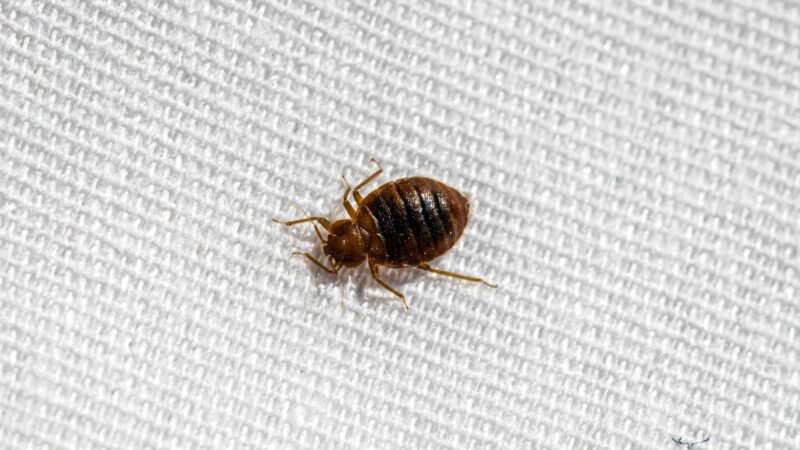
The best possible way to recognize an infestation is to look for the physical signs of bed bugs. When changing bedding, or cleaning, consider looking for the following indications:
- Noticing reddish or rusty stains on mattresses or bedsheets. These stains are often caused by bed bugs being hard-pressed on the linens.
- Bed bug droppings. They look like clumps of tiny dark spots on your bed, which are around the size of a marker dot.
- Pale yellow skin sheds
- Eggs and eggshells about 1mm in size
- Seeing live bed bugs
Where Bed Bugs Hide?
When bed bugs are not feeding, they hide in various hidden spots around the bed, seams, mattresses, and cracks on the bed frame or headboard. If the room is infested heavily, you may locate bed bugs:
- In the joints of drawers.
- In the seams of couches, between cushions, and the folds of the curtain.
- In electrical appliances and boxes.
- Under wall hangings and loose wallpapers.
- At the wall corner.
How Long Does It Take to Show Signs of Bed Bugs?
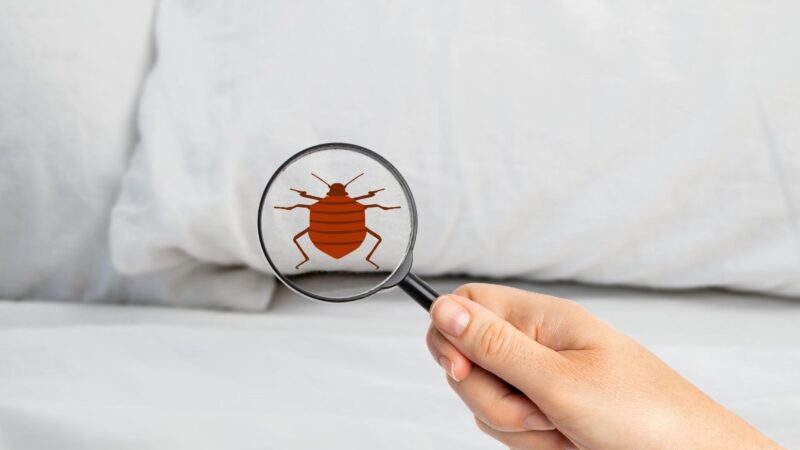
The nymphs can reach adulthood in as short as 21 days under favorable temperatures, between 70ºF to 80ºF (21ºC to 27ºC) and regular blood meal.
However, realistically, it takes about five weeks to reach maturity, where the infestation begins to show.
How Do Bed Bugs Start Off?
Bed bugs usually start off from other infested sites or used furniture. Most of the time, these bugs hitch a ride in luggage, backpacks, purses, or other things put on soft or upholstered surfaces.
They can transit between spaces in multi-unit structures, such as apartments, hotels, lodgings, and even airports.
What Is the Main Cause of Bed Bugs?
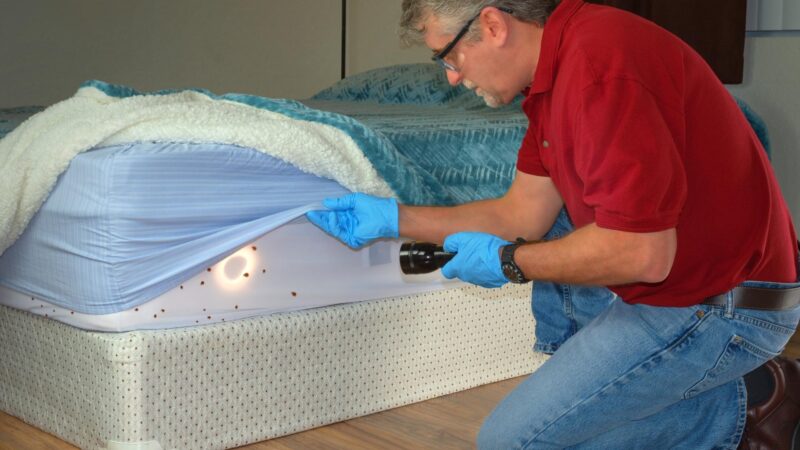
Travel is the most typical cause of bed bug infestations. Often unknown to the traveler, bed bugs hitch on people, luggage, clothing, or other personal things.
You can pick up bed bugs in public or private places, such as buses, taxis, airports, nursing homes, libraries, etc. In homes, bed bugs are attracted to dirty clothes, warmth, dark bed sheets, and carbon dioxide.
How Do You Inspect a Mattress for Bed Bugs?
To check the mattress for bed bugs, look for the signs, such as rusty or reddish stains and dark droppings. You can also look for the yellow skin sheds of the nymphs—a sign that they have grown larger.
Can You Have Bed Bugs Without Knowing About It?
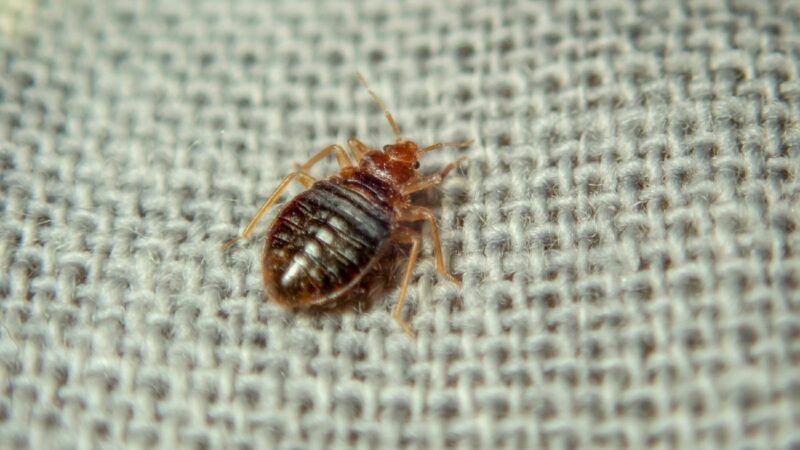
It’s possible to have bed bugs even without knowing it since it usually takes at least seven weeks for a bed bug to grow into an adult. So, if you see matured bugs roaming your area, you can reasonably infer they’ve been there over seven weeks prior.
Identifying a Bed Bug Infestation
To identify a bed bug infestation, you can look for the following signs:
- Tiny bloodstains marks on your pillowcases or sheets.
- Rusty or dark spots of bed bug droppings on mattresses, sheets, bed clothes, and walls.
- Eggshells or shed skins in various areas where bed bugs hide.
- An offensive, stale odor
Once you suspect having an infestation, consider doing the following:
- Remove all the bedding and examine it thoroughly for bed bug signs.
- Pull the dust cover and inspect the seams in the wood framing.
- Inspect your closet for bed bugs, as they usually love to attach themselves to clothing. Their presence will be apparent as their foul scent will give them away.
If you’re uncertain about bedbug signs, you can look for the given signs above or call a pest control professional.
Invisible Problems with Bed Bugs
For many years, bed bugs have intimidated thousands of homeowners. In addition to the apparent ick factor, bed bugs are a massive issue for rental properties and homes.
One female bed bug can deliver up to 5,000 eggs a month, escalating the infestation problem very quickly. Though they’re not known for circulating diseases, bed bugs are blood-sucking insects that cause itchy bumps.
Many people encounter bed bug bite symptoms, such as welts, severe itching, and swelling around the bitten area. Some people can undergo allergic reactions to bites, making the symptoms worse.
In rare cases, severe bed bug allergies can result in anaphylaxis—a life-threatening disorder that can cause respiratory collapse.
What to Expect after the Pest Control Technician Leaves?
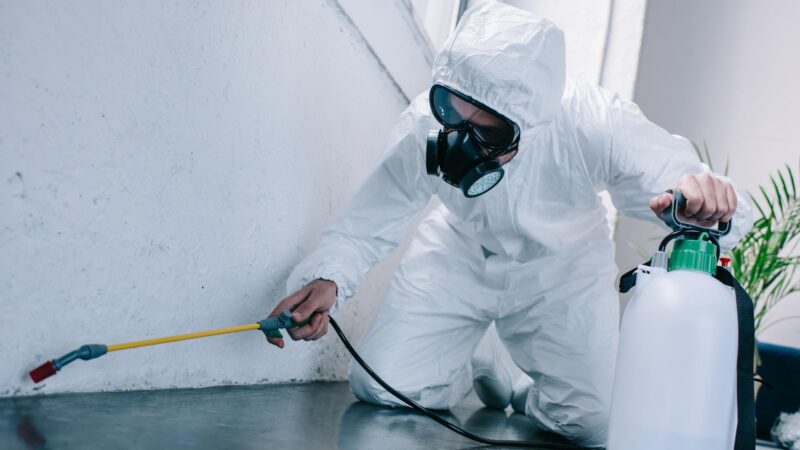
Pests can come to your property anytime, and a pest control treatment is an ideal solution for that. Once your home receives treatment, bed bugs will be gone.
However, this doesn’t mean they’ll be gone in your home quickly. It could take weeks before seeing the pest control effect. Once the treatment starts to work, you’ll then enjoy a pest-free home!
When to Call Professionals?
Before calling a pest control professional, inspect your home thoroughly and look for the signs, such as bloodstains on mattresses, eggshells, and skin sheds, confirming bed bugs’ presence within your home.
When you notice a large number of bed bugs on a single area of your property, it’s time to call a pest control professional to solve the issue. Unlike ants, bed bugs don’t live in colonies or groups, so seeing them in large numbers means there’s a growing infestation within your area.
Frequently Asked Questions
What Smells Do Bed Bugs Hate?
Various scents that irritate bed bugs’ senses come from compounds made by plants, such as smells of cinnamon, mint, citrus, and spices. These can be used as natural pesticides to deter bed bugs from entering your place.
Bed bugs also detest the aroma of diatomaceous earth. This powdery essence is often sprinkled where bed bugs travel, causing the particles to cling into the bug’s exoskeleton.
Can Bed Bugs Live In Pillows?
Bed bugs can live and hide in pillows, although far less often than they conceal in mattresses. They mostly spend most of their time hiding, waiting for their host so they can feed on their blood.
How Do You Find Bed Bugs during the Day?
During the day, you’ll find bed bugs hiding in cracks or areas close to their host’s location. So, if you notice cracks and gaps on box springs, bed frames, and mattress seams, seal them right away, as bed bugs can use these spaces as their dens.
Can You Live With Bed Bugs?
It isn’t ideal for people to live with bed bugs as they live on the blood of humans and animals. Although they don’t cause health issues directly, their bites can cause allergy and even anaphylaxis in the worst cases.
Can You Just Get Bed Bugs?
You can get bed bugs from various places, such as hotels, Airbnb, but the most common is travel. The most usual way people get bed bugs is from staying at a temporary lodging such as a hotel or Airbnb.
This is why you should always inspect the room areas around the bed before sleeping.
Summary
Bed bug infestation can be hard to detect. So, you have to examine your place thoroughly, particularly in wall voids and other openings.
If you’ve noticed a large number of bed bugs in one area, it means that large infestations are happening. When this happens, call a pest control professional to solve the problem.